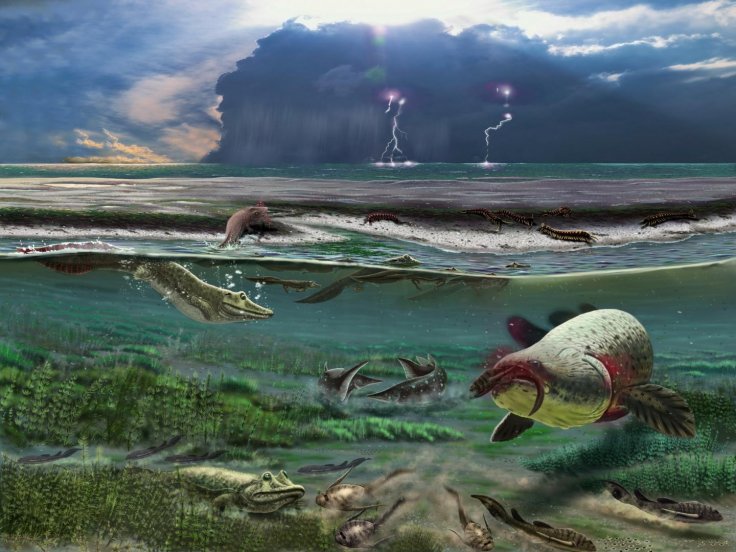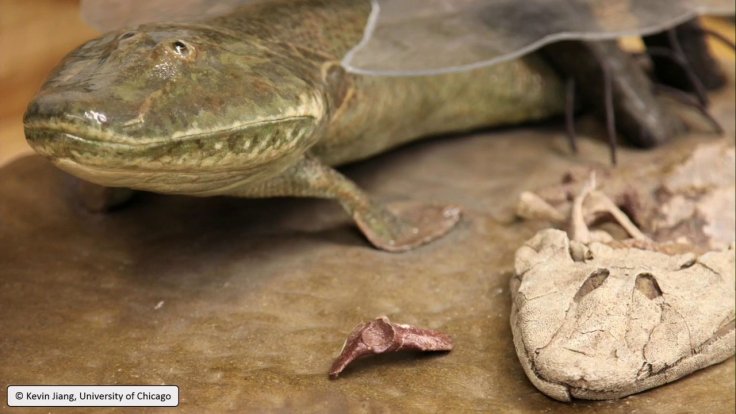
Research has uncovered the lifestyle and manners of a needle-toothed tetrapod that existed more than 370 million years ago. Its habits have made scientists closer to understanding the strange puzzles of evolution. The team was headed by the Ural Branch of the Russian Academy of Science.
The project was worked upon by a global team of palaeontologists, who put together some fossilised skeletons of a new tetrapod species called Parmastega aelidae and happened to create a skull that looked like a crocodile. This was rather a unique feature among the earliest tetrapods. Its eyes were located above the top of its head, indicating that the species could watch its prey even as it swam close to the surface of a tropical lagoon.
The study was conducted in partnership with teams across the Universities of Lincoln and Cambridge in the UK, the University of Latvia, and the University of Uppsala in Sweden. They found that the strange and curious blend of anatomical features gave insights into the manner in which the ancient ancestors kept hunting and maintained an ununusual life. Scientists feel that with its slender needle-like teeth and elastic jaw it grabbed its prey and then crushed it to death with huge fangs that protruded from the palate.
The Parmastega had sensory canals that identified vibrations in the water. These organs were inherited by the species from its Piscean forefathers, according to Professor Per Ahlberg from the University of Uppsala in Sweden. "These canals are well developed on the lower jaw, the snout and the sides of the face, but they die out on top of the head behind the eyes," he said. "This probably means that it spent a lot of time hanging around at the surface of the water, with the top of the head just awash and the eyes protruding into the air."

The article, published in Nature.com, showed that one part of the tetrapod's shoulder girdle was composed of cartilage, even as its vertebral column, as well as paired limbs, was also made of cartilage. This indicated that the animal was in water almost all the time. The concentration of the remains of the animal hinted that the tetrapod animals might have banded together socially. Today's tetrapods are the amphibians, reptiles, birds and mammals of the world. Earlier, the Parmastega was a precursor of the earlier records of near-total tetrapod skeletons by nearly 12 million years.
Dr Marcello Ruta from Lincoln's School of Life Sciences added: "The evolution of tetrapods is one of the most important events in the history of backboned animals, and ultimately led to the appearance of our own species. Early in their history, tetrapods evolved many changes in their feeding strategies, movement abilities, and sensory perception, but many of these are still shrouded in mystery.
"These new findings demonstrate that the sequence of evolutionary changes that occurred during the transition from fish-like creatures to tetrapods were much less linear than previously thought. This helps us to amend or challenge previous evolutionary scenarios and give new insights into the life and environments of our most distant forerunners. Findings like those of Parmastega can help us grasp the complex patterns and processes that have shaped life's diversity for hundreds of millions of years."









